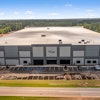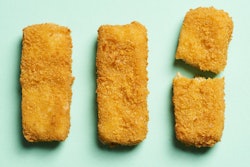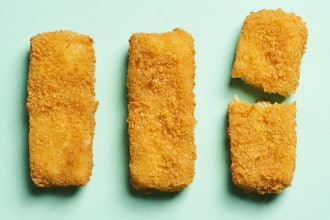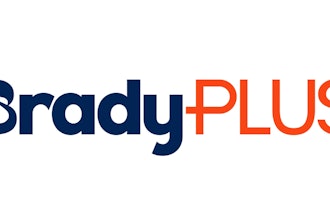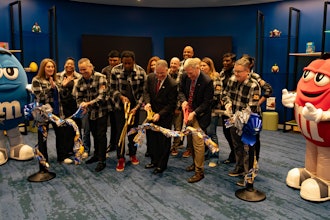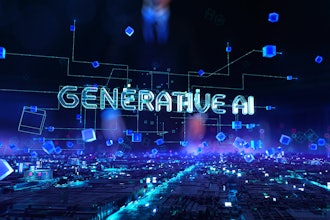
What do digital twins really mean for manufacturers? After three decades of evolution, digital twins can model the real, complex world accurately enough and be applied to increasingly complex systems (e.g., a connected autonomous car, supply chains) and complex adaptive systems (e.g., smart cities, care systems). They don’t only see change; they learn and can guide change.
For example, the what ifs of product launches, the impact of new enterprise technologies, faster decision-making models, supply chain options in a shock, new commercial models with existing customers, etc. – digital twins can play a key role in these. Currently, however, the biggest barrier to getting value from digital twins is that management teams within an organization largely do not understand the relevance of this virtual world.
The Smart Twin
A digital twin is a realistic digital representation of a physical or virtual thing that interacts with a counterpart within critical events. It’s not a simulation, which while also is a realistic digital representation of a physical or virtual thing, doesn’t interact with what it’s modelling. A flight simulator is a great example of this – it has no interaction with a real aircraft or the situation it’s experiencing.
A digital twin can model and describe changes that the business can understand (such as product differences that create manufacturing variability, environmental conditions that affect jet engine performance, or demographics that influence drug trials). They create such resolution of their environment that they foresee the effects of small changes.
They can predict whether a change will introduce side effects such as product faults, component failures or bad reactions to a drug, and span the entire lifecycle of an asset, process or person. The most established uses for digital twins are the six P’s: Prediction, Prototyping, Practice, Prevention, Personalization and Proposition.
For example, in the case of the manufacture of a connected car:
- Early in the design phase, before launch, digital twins are used to predict aerodynamic, mechanical and structural performance.
- Successful designs are then prototyped virtually in digital environments that reflect both normal and extreme driving scenarios, and the design is improved. Ecosystem partners responsible for possible components (e.g., software modules) or elements of the expanded offer (e.g., maintenance services) can participate to improve their components and services.
- As the new car is prototyped in the real world, the digital twin is updated with actual performance characteristics and run through parallel virtual tests that replace some of the time-consuming physical tests, shortening the time to reach production.
- In production, the manufacturing machines also have digital twins that help monitor performance, predict breakdowns and schedule preventative maintenance, reducing machine downtime and extending machine life.
- Production engineers also use a production digital twin to predict manufacturing performance and opportunities, helping to optimize supply chain throughput.
- The twins are now acting as a sophisticated database, allowing departments and ecosystem partners to interrogate performance data and send predictive and preventative change requests to manufacturing and software development, improving the car’s in-service time and adding new features.
The Digital Thread
Digital threads follow a single set of related data as it weaves in and out of business processes and functions to create continuity and accessibility.
For example, a digital thread of a product follows the lifecycle from design through engineering and product lifecycle management, to manufacturing instructions, supply chain management, and on to service histories and customer events. This thread enables enterprises and their partners to anticipate and communicate up and down stream of any point in the product's lifecycle.
How do organizations create digital threads?
Most organizations already have ERP, PLM, SCM and CRM systems where most of their data resides (though there are also other sources of valuable data, including emails, spreadsheets, models, simulations, documents, etc.). These enterprise systems are good for collecting data and for relating data, but not for answering more than just basic business questions without manual intervention and interpretation – they are poor at answering the “what if?” questions that support critical management decisions.
Digital threads are emerging for entire operational environments such as factories, supply chains, IT and field forces. They are driven by digital twins, advanced digital platforms, IoT, AR, AI and robotics.
Moving from simulations to digital twins and threads doesn’t create a model of your entire operation; it’s perfectly reasonable, and desirable, to focus on those areas where they’ll have the most impact. The place to start is by educating senior decision makers on the six P’s and how they could manifest themselves in your organization.
Creating a digital twin/digital thread grid, like the one below, will allow you to see where the digital twins might be in your organization (vertical groups) and digital threads through different stages of your operation (horizontal groups).
Once completed, this grid will help you realize where true value can be gained, allowing you to prioritize the right projects, and see where you already have simulations and data that can be developed into digital twins for business advantage. Building and using digital twins and digital threads will take your company on a journey of IT modernization and business transformation.
Bill Murray is a senior researcher and advisor at Leading Edge Forum. You can learn more from their interactive paper, “Digital Twins: A Guide to the Labyrinth.”


